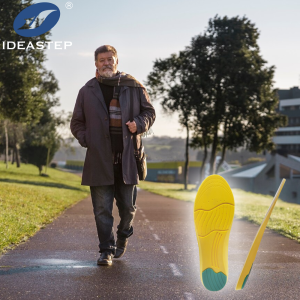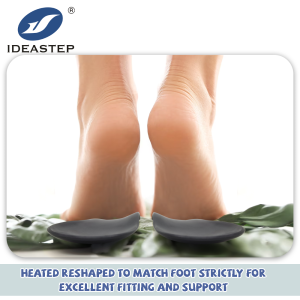Hallux rigidus, a condition affecting the big toe joint, causes stiffness and pain, limiting the range of motion. For podiatrists, treating this condition effectively is crucial, as it can significantly impact patients’ quality of life. Carbon insoles have emerged as a potential therapeutic option, offering unique advantages in managing hallux rigidus.

Understanding Hallux Rigidus
Hallux rigidus is characterized by the degeneration of the joint cartilage in the big toe, leading to stiffness and pain. This degeneration can be caused by various factors, including trauma, arthritis, or congenital abnormalities. As the cartilage wears down, bone-on-bone contact occurs, resulting in pain and limited movement.
The Role of Carbon Insoles
Carbon insoles are designed to provide both support and cushioning to the foot. The carbon material, known for its excellent shock-absorbing properties, helps distribute pressure evenly across the foot, reducing stress on the hallux joint. By relieving pressure and reducing impact, carbon insoles can help alleviate pain and improve functionality for hallux rigidus patients.
Advantages of Carbon Insoles
Customizability: Carbon insoles can be custom-made to fit each patient’s unique foot shape and gait pattern, providing optimal support and comfort.
Lightweight and Durable: Carbon material is lightweight, ensuring minimal bulkiness in shoes, while also being highly durable, ensuring long-lasting use.
Enhanced Stability: The carbon layer provides enhanced stability, helping to maintain the foot’s natural alignment and reducing the risk of further injury.
Improved Biomechanics: Carbon insoles can help correct biomechanical issues, such as pronation or supination, which can contribute to hallux rigidus.
Easy to Use: These insoles are easy to insert into regular shoes, making them a convenient and practical treatment option.
Podiatrist’s Perspective
From a podiatrist’s perspective, carbon insoles offer a non-invasive and cost-effective treatment option for hallux rigidus patients. They can be prescribed as a standalone treatment or in combination with other therapies, depending on the severity of the condition. The ability to customize the insoles to individual patients’ needs is a significant advantage, as it ensures maximum comfort and support.
Conclusion
Carbon insoles represent a promising addition to the toolbox of podiatrists treating hallux rigidus. Their unique properties, combined with their customizability and ease of use, make them an attractive option for both patients and practitioners. As research continues to support their efficacy, carbon insoles are likely to play an increasingly significant role in the management of this condition.



